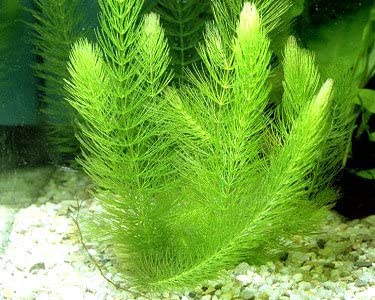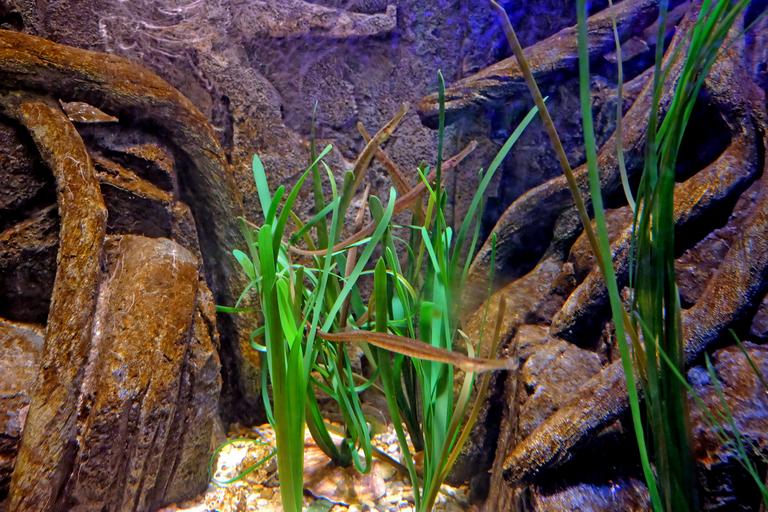Introduction
Are you weighing up the pros and cons of Cabomba vs Hornwort and wondering which of these would be better to have in your fish tank? Let’s compare the two!
Both Cabomba and Hornwort offer a lot of beauty in an aquarium. It can be pretty difficult to tell the two apart, and you may find that either works well for your purposes. However, there are some differences between them, including how they grow, so it’s a good idea to know which you are planting in your aquarium so you can care for it properly.
Recommended:
Does Cabomba Need To Be Planted?
Cabomba does not need to be planted if you would prefer to let it float loose in your aquarium. Many of these plants are displayed in gravel, however, and it can help to keep them organized and tidy, letting more light into your aquarium.
Cabomba should be weighted down with lead if you are going to let it float, or it will drift to the surface of the aquarium and may start to die. It does not like to be exposed from the water, so allowing it to drift at the surface is not a good idea, as it may kill the whole plant.
If you notice your Cabomba is floating, consider planting it instead.
Does Green Cabomba Need CO2?
Green Cabomba does not technically need much CO2 in order to survive, but it will flourish much better in a tank that contains CO2. If it has limited CO2, its growth may be stunted and it might lose some of its bright coloration.
In real CO2 deficits, you may also notice the leaves of the plant starting to drop, and this means you should check the CO2 levels. This can be caused by other problems, but it’s worth boosting the CO2 levels for this plant if you can.
Does Cabomba Grow Roots?
Yes, Cabomba will produce roots in fine, string-like hairs at the base of its stems. If you bury the plant in gravel, these should stay at the bottom of the aquarium and will not be visible.
If you don’t bury the plant, you’ll see its roots floating in the currents just like the leaves. The roots are not particularly obtrusive, and many people don’t mind seeing them in their displays, but if they bother you, consider planting them instead.
You should always dig up a Cabomba properly if you have planted it and you wish to move it. If you just tug on the leaves, you may tear the roots and kill the plant. Instead, scoop up the sediment and gravel surrounding it and gently shake the roots free to minimize any damage done to them.
How Tall Does Cabomba Grow?
Cabomba can get amazingly tall in the right conditions. It can reach any where between 30 and 80 cm (11 inches to 31 inches), so you don’t need to worry about whether it will grow enough to fill your tank. The stems can reach 5 to 8 cm wide (approximately 2 to 3 inches), making a lovely bloom of greenery.
Its beautiful foliage will fan out throughout the tank, streaming upward in the currents, and a large Cabomba can look seriously impressive. It does need plenty of light to reach these heights, however, so be sure you are providing adequate conditions for it to thrive in.
If your aquarium is dimly lit, you may wish to choose an alternative plant, as Cabomba won’t thrive in dark conditions. This is particularly true if you choose one of the colorful varieties, as they have less chlorophyll and therefore cannot convert sunlight as efficiently as green Cabomba.
Does Hornwort Need To Be Planted?
Hornwort is a similar and very popular aquarium plant, and many people love to float this in their aquariums – but you should only float it, rather than trying to plant it in the substrate at the bottom of the aquarium. You can achieve this by tying lead weights around the stems to keep them low in the water.
Many people attempt to attach their Hornwort to the bottom of the tank or plant it in a container, but Hornwort is unlike Cabomba in that it does not have roots. If you sink the end of its foliage into gravel, it is likely to rot due to the reduced airflow.
This can kill the plant in some circumstances, so you should leave your Hornwort floating freely, with just an anchor of lead to stop it from drifting to the surface.
Can Hornwort Grow Without Soil?
Yes, Hornwort can grow without soil, and does not want to be buried in soil. If you are trying to plant your Hornwort, you should be aware that it will likely rot at that end within a few weeks.
The remainder of the plant will then drift away freely into the tank, while the rotten part remains in the container. This isn’t an ideal situation, so it’s best to just weigh your Hornwort down in the approximate position you like and avoid using any sort of substrate to hold it down.
Does Hornwort Grow From Cuttings?
Hornwort does grow from cuttings, yes, and it can be amazingly prolific. Any reasonably large part of the plant can be cut off and it will form a new plant if it is given the right conditions. If you have pruned your Hornwort, you can use the trimmed tops to create whole new plants if you choose to.
Side shoots can also be used for propagation, which means you don’t need a lot of Hornwort in order to fill your aquarium, as long as you give it conditions that are conducive to growth. Simply trim the pieces that you wish to propagate and put them back in the water; they will soon start shooting into new plants.
Conclusion
Both Cabomba and Hornwort are popular aquarium additions, with some slight differences. Cabomba grows proper roots and it can be planted in the base of the aquarium or allowed to float free, while Hornwort should be allowed to float if it is to thrive. Do not plant Hornwort, or the stems will rot.




